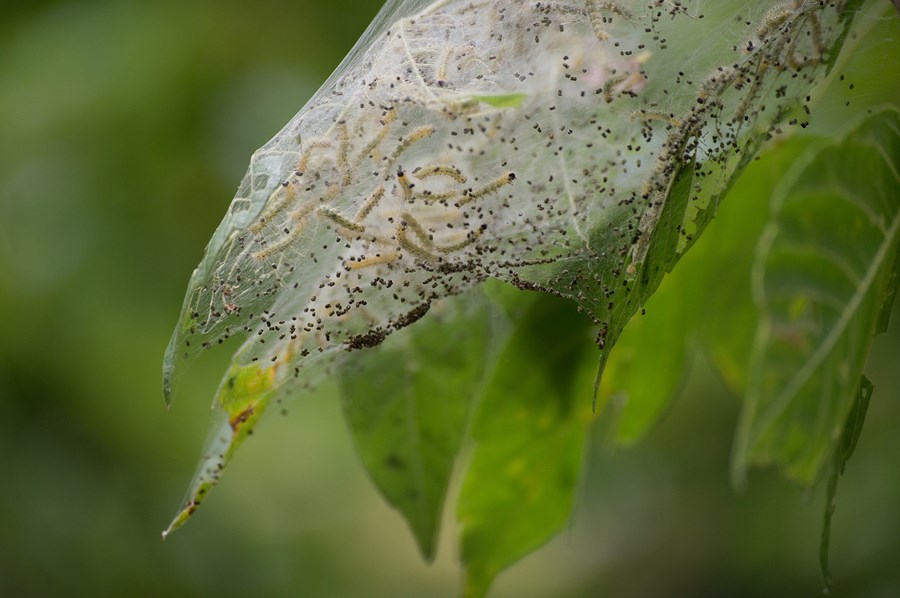Sometimes there’s interesting stuff on Facebook that leads me to research something I had never seen (or noticed) before.
A recent Flin Flon post showed a photograph of webbing in a mountain ash.
My first thought was that it must be a tent caterpillar, but it was too late in the season for the forest tent caterpillar with which we are all familiar. I knew there were other tent caterpillars, but research indicated that it was too late in the season for those as well.
The research did, however, lead me to the fall webworm.
This caterpillar is new to me, but not to others in Flin Flon who see their nests almost annually.
After seeing the photograph and the online information, I started noticing affected trees on my drive to and from Flin Flon. In retrospect, I had seen affected trees in the past, but had never stopped to investigate.
The adult fall webworm, Hyphantria cunea, is a moth that is white with reddish-orange front legs and a wingspan of 30 to 40 millimetres. The adults emerge from the ground at the end of June and early July, and after mating the female deposits 200 to 300 round, white to golden-yellow eggs on the undersides of leaves.
Within two weeks, the eggs hatch into larvae (caterpillars) which feed on the tree or shrub for six to eight weeks.
Full grown caterpillars are approximately 25 millimetres in length and have pale yellowish-brown bodies with broad, dark bands down their backs. Long, whitish hairs protrude from black and orange impressions along the body.
The caterpillars secrete silk, which they spin into small webs. As they grow, they enlarge the webs.
They leave the web at dusk to feed and return to it at dawn to rest.
The large, ugly nests of webbing contain excrement, cast larval skins and dried leaf fragments.
In September, the caterpillars drop to the ground and burrow into the soil, constructing cocoons in which they pupate. They overwinter in the soil and complete their life cycle by emerging as moths in July.
On the prairie provinces the resulting damage is minimal because the attacks occur late in the growing season. Heavy infestations can, however, weaken the tree and make it susceptible to other pests.
The nests can be removed and destroyed when the caterpillars have returned to them to rest.
Bacillus thuringiensis is effective when the caterpillars are still small, but the spray must be strong enough to penetrate the webbing.
For all the pests that have made it to North America from Europe and Asia, this is one native pest that travelled to them, building nests worldwide.




